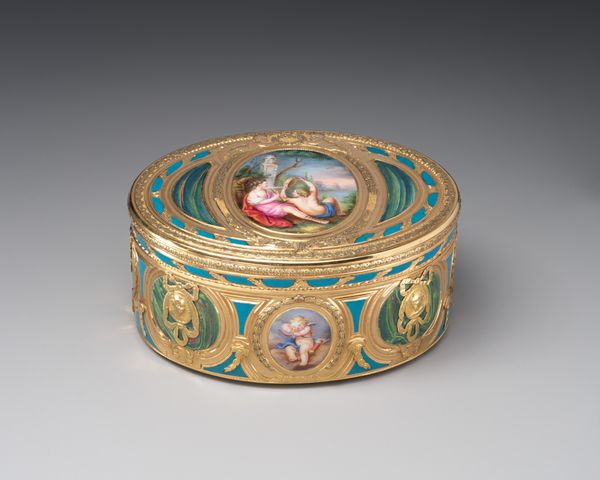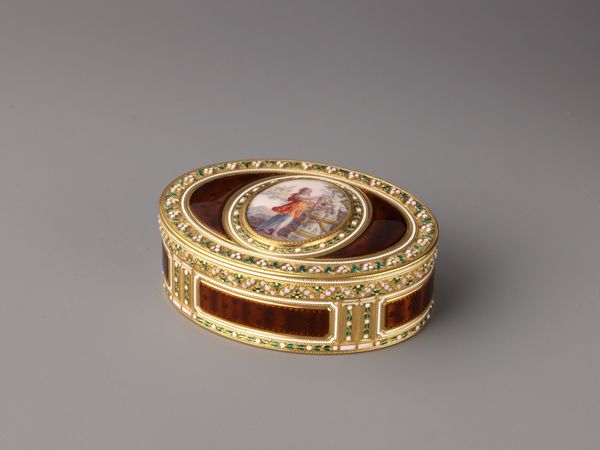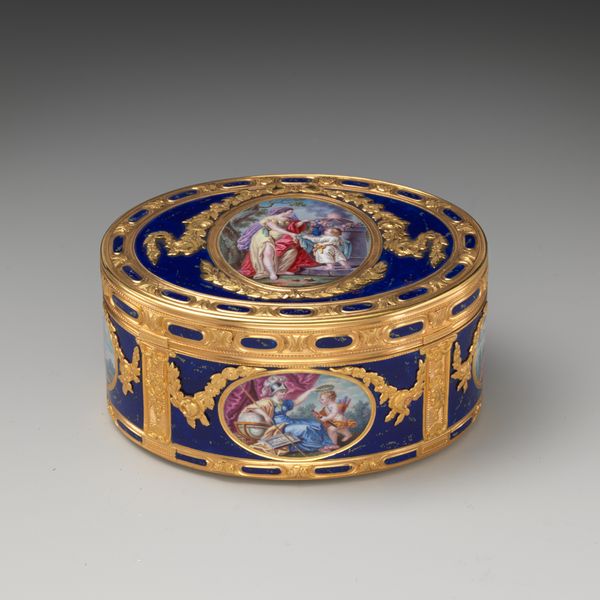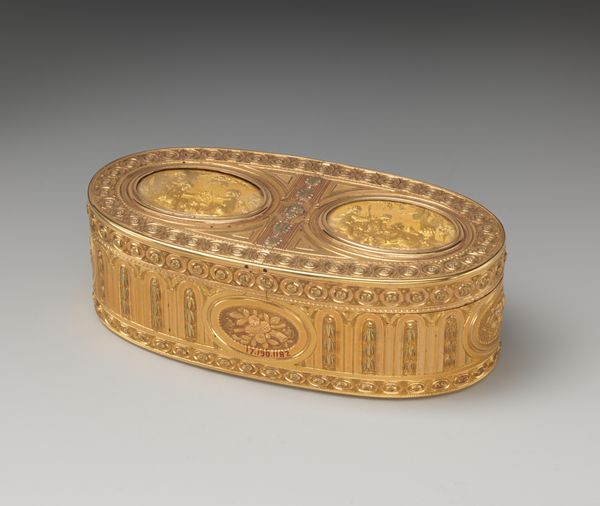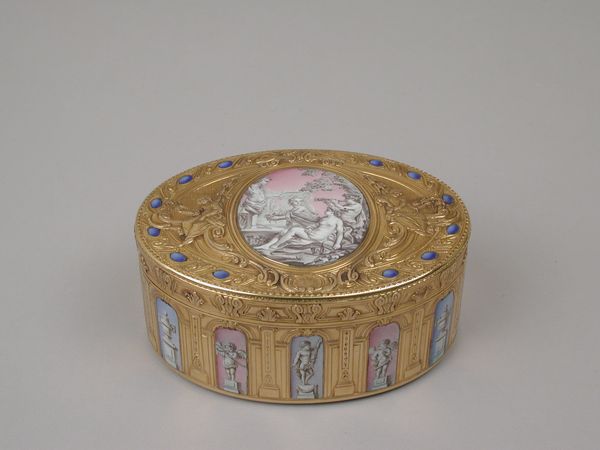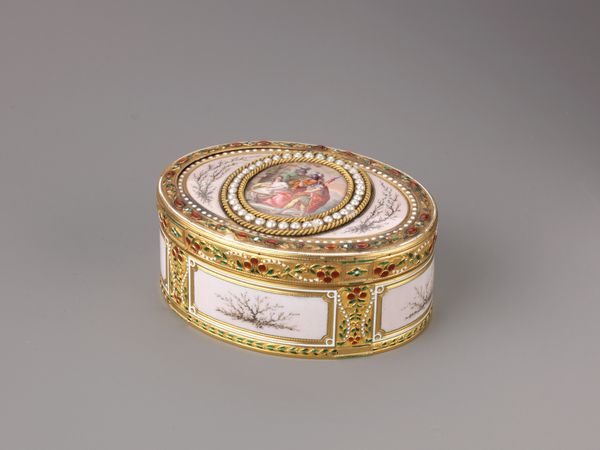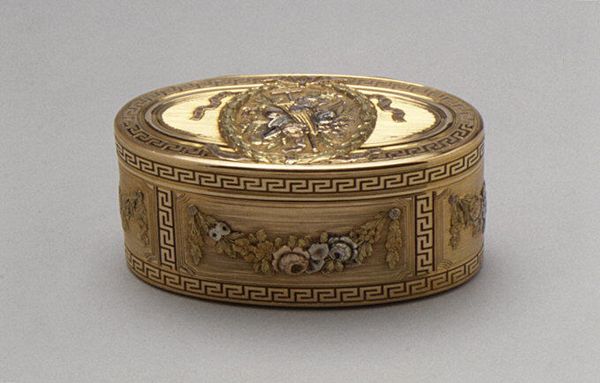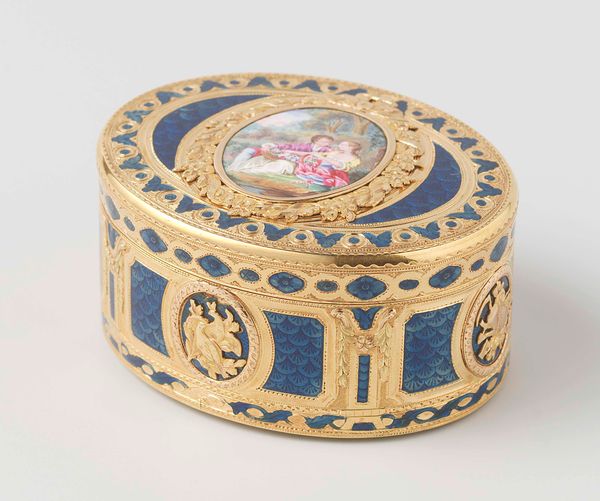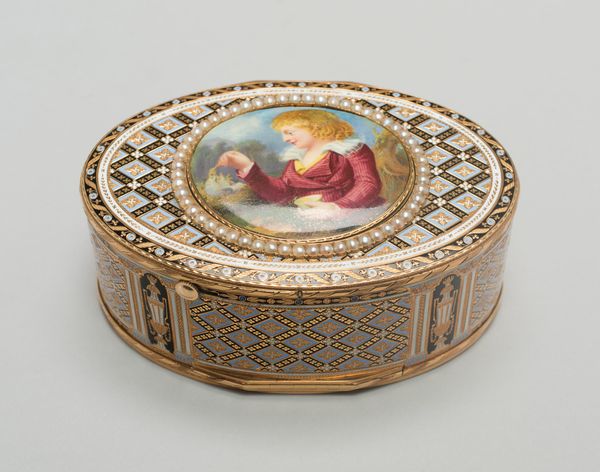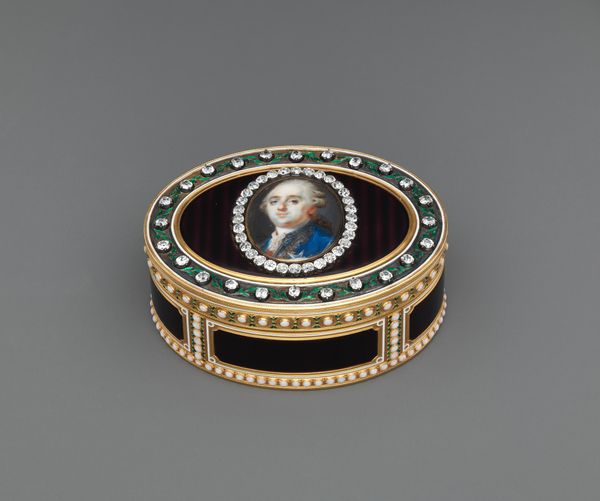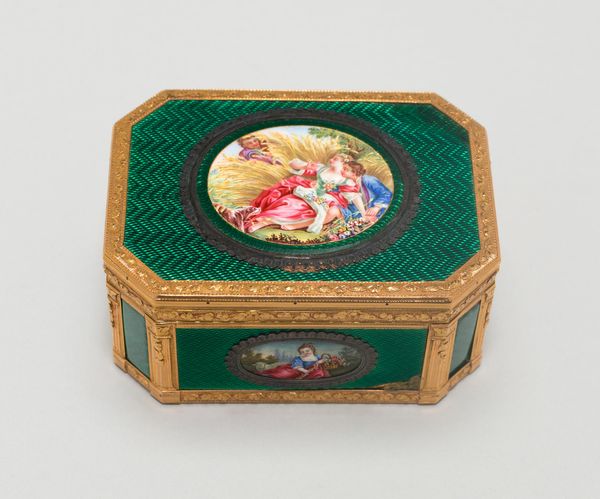
Snuff Box: Portrait of Saxon Prince c. 1775 - 1780
0:00
0:00
Dimensions: 3.8 × 8.6 × 6.4 cm (1 1/2 × 3 3/8 × 2 1/2 in.)
Copyright: Public Domain
Johann Christian Neuber created this snuff box, with a portrait of a Saxon Prince, at an unknown date. This is a personal object, but the inclusion of a portrait speaks to the social role of art. In eighteenth-century Europe, decorative items like this snuff box were often luxury goods. Neuber was working in an era where the craftsmanship of luxury goods served to publicly reinforce status. The Saxon Prince, a member of the ruling class, is represented with an aristocratic bearing. Visual codes, such as the use of expensive materials like gold, enamel, and gemstones, contribute to the impression of wealth and status. It's also important to note that Neuber worked in Dresden, the capital of Saxony. Princely patronage played a significant role in the city's artistic life, as with many European cities in this era. Understanding the snuff box requires that we consider the social conditions that enabled its production. Historians might examine court records, guild regulations, and family papers to discover more. The meaning of art is always contingent on its social and institutional context.
Comments
No comments
Be the first to comment and join the conversation on the ultimate creative platform.
